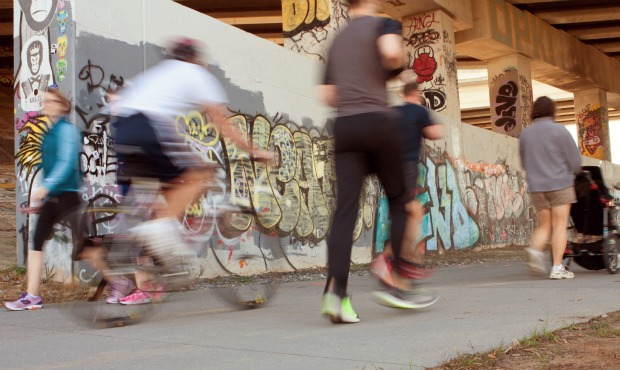breaking the tackle
Question
have you any tips, to improve my attack, i am fairly fast (second row 168 Lb's) i have a strong upper body, but i can just never seem to break the line. i also wondered if there are any tips for improving the way i run the ball in on a tap. i always manage to get really smashed. thanks luke
Answer
Luke,
I suspect that you are running straight up and facing forward when making contact. That is often a problem with big players. Many believe that pure strength and size can compensate for poor technique. Unfortunately there is often a bigger player with better technique.
There are many ways to go into contact. I will describe the two classic 搊ldie, but goodie?techniques that I use.
The first is the classic 損ower step?
First, let us assume that you are moving in with the body ready to make contact, and are holding the ball with two hands.
About five meters out, you make a decision ?go into contact, pass the ball, kick the ball, etc. Any closer and you will not have the time to execute the decision.
Once the decision has been made, carry on through (do not decide to go into contact, then try to pass the ball)
Once the decision has been made to go into contact, start to rotate your body so that your side is facing the opposition.
Prior to making contact:
-Establish a solid base (that squat position again)
-Plant your forward foot as forward as possible, best case is between your opponents feet
-lean back a little on your rear foot
-bend your knees (crouch)
-tense your body, especially your shoulder
-Protect the ball by keeping it in both hands and placing it on your opposite hip.
-Do not let your shoulder go beyond your forward knee (this will make you unstable)
Upon contact:
-When your shoulder and upper arm makes contact with you opponent, ensure that there is a straight line in your body from the tip of your shoulder to your rear heel on the ground (do not tilt your shoulder down, or lower your head.
-Take the contact, bending your rear knee a little to take the shock.
-Upon contact, your opponent should be knocked back (essentially he ran into a brick wall, you)
-At this point attack.
-As you become comfortable with this technique, you can modify it to work better for you.
Remember, rotate the body and be in good body position prior to contact!
The second is the 揵aseball bat?br>
With this technique prior to making contact,
-Rotate your body
-Plant your forward foot
-Lean back a little on your rear foot
-Bend your knees (crouch)
-Essentially establishing a solid 揵ase?
Next, you protect the ball by placing it in the valley formed between the upper thigh and waist when you crouch and putting your rear forearm and hand over the ball to secure it. This is where the 揵all?comes in.
Now that you have established the base and are protecting the ball, you are ready for contact. You extend your free arm forward with the hand up and fingers extended (do not ever make a fist). You attempt to make contact with your hand on to your opponent's inside chest or shoulder, thus knocking him off balance. The old English term for hitting someone is to 揵at?him. This is how this technique came to known as the 搕he Baseball bat? It is generally a static technique that knocks the opponent off balance, preventing a tackle.
Again, as you become comfortable with this technique, you can modify it to work better for you.
A modification, generally for smaller players who want to hold off the opposing player is to actually grab his jersey, allowing the elbow to bend a little to take the shock. Generally, even the smallest player maintaining a stable base can hold off the opposition for a couple seconds allowing teammates to come in for support. Like almost all rugby push/contact techniques, you go from low to high.
Good luck,
Deane Shephard
Stuttgart RC
Crash ball running
Handling a tackle?


